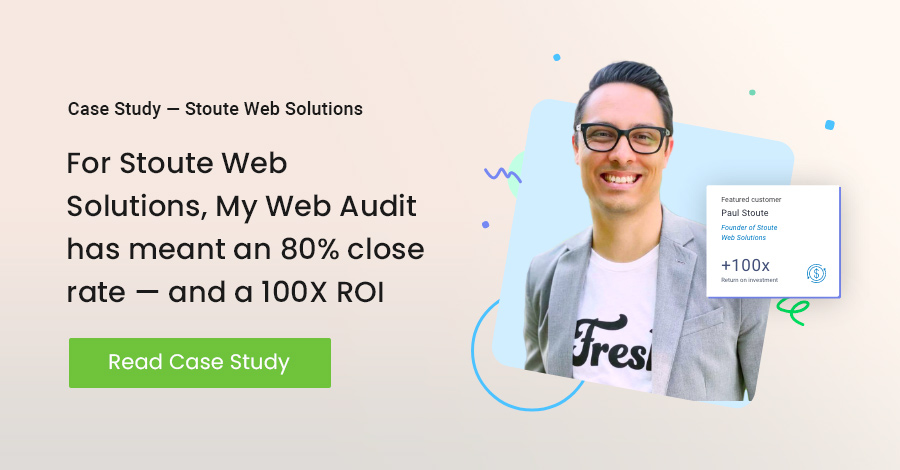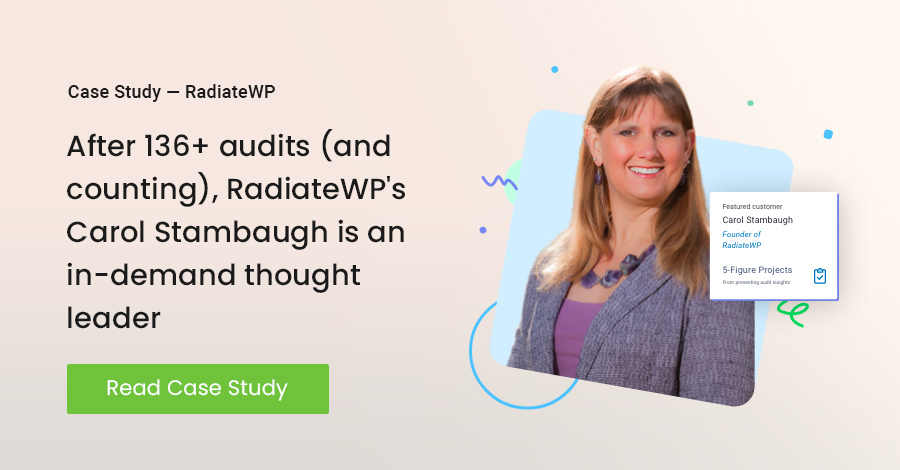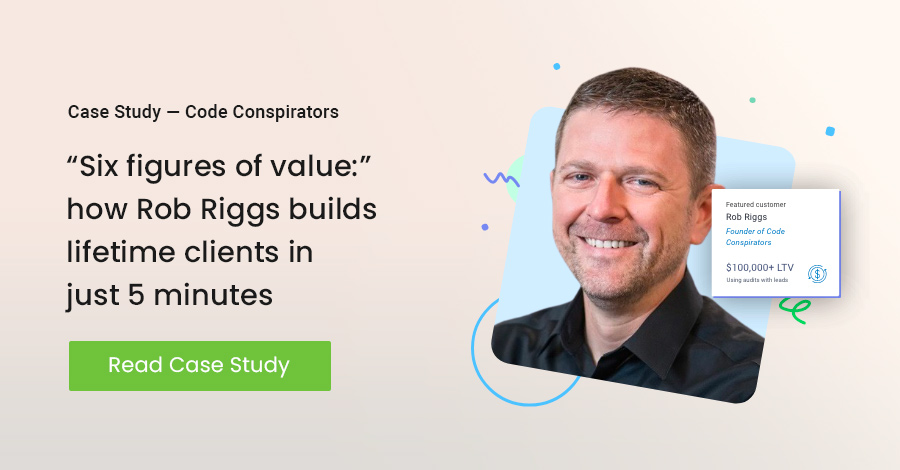
Relational website design: the future of staying in business
The web design industry has changed; and if you don’t embrace the shift, it could cost you your business.
Recently I embarked on constructing a pitch deck for a major player in the web hosting industry. My time involved months of research into the current ecosystem of the web professional space and where it was headed.
Although the pitch didn’t result in a “go,” the knowledge I gained through my research was gold.
What I came to realize was that there had been a major shift in the web industry. If web professionals who run their own freelance gig or small agency didn’t embrace this current change, they would soon be out of business.
Let's begin at the beginning...
In 2006, the year I taught myself HTML, Google was barely a household name and WordPress was strictly a blogging platform. Search engine optimization was starting to peek its head up from the ground, and those that were purchasing domains with their keywords in them were killing it on ranking.
You could claim that there wasn’t much need for advanced inbound marketing, lead capture forms, or social media campaigns to drive traffic, sales, and trust among your target market. Heck, Facebook was just two years old.
At this time the web design industry was PURELY transactional.
The steps were simple. A client approached you interested in a website, you took the brief, created the website, then handed it over and closed out the project with the client sending them on their way.
This model served the industry well at the time as the transactional delivery of the website gave the owner the results he or she needed - results that worked in 2006, that is.
There was no emphasis on the relationship between the web professional and client, and if this pairing favored both parties. There was rarely a discussion of ROI or how this website would create a return over time.
Transactional website design was literal payment for code and nothing more.
In the current ecosystem of the web industry, this model has failed both website owners and website professionals.
And worse, most website professionals are still stuck in the transactional nature of 2006 website design. They focus too heavily on the price of the one-time project quote and not the needs of the website owner compared to what it will take to achieve those needs through a website. Because many freelancers and small web agency owners refuse to niche, understand their specialty and strength, they constantly contract with the wrong clients.
These are the same web professionals that get nervous about AI self-creating websites, they see Wix as a legitimate threat to their business, and can’t fathom quoting for a project on anything other than the hourly rate it takes to produce the deliverable.
In fact, DIY website builders like Wix, Squarespace, and GoCentral by GoDaddy are examples of the current transactional market. If you are in this space, it’s becoming more challenging to operate at a profit.

The solution is relational website design.
Thanks to a major shift from WordPress, Google, and the growth of the Internet since 2006 - the industry now greatly supports the web professional to transition to this new business model.
Google and WordPress, two leading ingredients to a successful website, created technical implementations of clients needing a web professional to continually support their website.
No one can forget the major shift in the website design industry with Google’s release of Penguin in 2012 (a change in their search algorithm to avoid keyword abuse). Around this same time, WordPress was such a focus for hackers, it started promoting keeping the platform up-to-date to avoid security issues and SaaS systems for site updates was born.
Maintaining a website installation has grown to become an obvious need for website owners, as keeping a site up-to-date or adjusting features based on search engine algorithm changes. Even this last year, a basic need to now have an SSL certificate on WordPress websites was only made known to many website owners through their website professional.
The 5 rules of relational website design
But there’s more, way more, than technical reasons to practice Relational Website Design. There are principles (or rules) that should frame the backbone of how you work with clients and promote your services online.
1. Put the business needs of the website owner at the forefront of the build
Instead of leading the conversation with the budget, the process should first involve what the website should achieve for the client’s business. This is not rocket science and doesn't require you to be a mind reader. It all starts with using a web design questionnaire ( a series of questions you ask your prospects or clients before you start on their project).
Once you know their specific needs and desired outcomes, we then know if their budget is appropriate for those needs. This is hard for web professionals who doubt their ability to achieve certain results, but that’s where transparency comes in and learning to work with the right clients at the right stage of your business.
Pro Tip: Leverage My Web Audit’s ROI Calculator to help frame the conversation around results. This helpful tool gives you the right questions to ask and the deliverable to wow the lead.
2. Offer proactive input as a consultant who happens to design or develop
Rather than a hired designer or developer, a web professional who sees themselves as practicing Relational Website Design will often suggest “discovery phases” for clients unsure about their needs. This type of service offering puts them in the role of consultant. In the end, the value you offer as a consultant who knows how to implement what a client’s need is more valuable than any isolated designer or developer.
Pro Tip: Leverage My Web Audit’s website scan as the start of your conversation with website re-designs. The built-in checks of what to look for helps frame the conversation for results and allows you to set helpful metrics.
3. Offer monthly support to clients

The most important ingredient to a freelancer or agency practicing Relational Website Design is offering ongoing monthly support for their clients. This speaks to the “relational” portion higher than any service offering. Clients know you will be there for them on an ongoing basis. Indeed, it may not work for some clients who come through your door, but it should be the core of your business.
Pro Tip: If you aren’t offering Care Plans in your business or feel your Care Plans aren’t working for you, check out WP Care Market’s training on profitable Website Care Plans. This training reviews everything from what should be offered, processes to execute, sales tools, automation to make them run smoothly and how to hire a team to remove yourself from that part of the business.
4. Practice the belief that the website is a living and breathing deliverable that changes over time
A website built today will look out-of-date in two years. It may be technically out-of-date in just a few months. A lead capture form that was converting is now seen as pesky, a design becomes “so-2015,” and the keyword once optimized is now so popular it’s no longer ranking. Relational Website Design freelancers or agencies will offer clients a way to continually keep the website refreshed and utilizing the latest features. This may be included in their monthly website care plans or yearly one-off projects with a focus on a continued relationship and growth for the client.
Pro Tip: Join a community of web professionals like yourself to stay up-to-date on the latest changes and trends so you can convey those to your ongoing monthly support clients. WP Care Market’s Facebook Group for Web Professionals and the My Web Audit Mastermind Group are nice places to start.
5. View the website as an investment for both parties
If anyone hires you to work on their website, they are not just investing in the website to produce results but are investing in you to be their website professional. It may take working together first on the website build, but through this, they begin to trust you. They now have your email and will always continue to ask you for your insight and support until you break that relationship. Therefore, putting out a proposal and agreeing to work with someone is you investing in them as a client. So choose your clients wisely.
Pro Tip: Make sure to screen your leads through an intake form. Be a better boss to yourself and refer away the leads that are not the right clients for you. By connecting with other web professionals in the Facebook groups mentioned above, you can refer to colleagues and they can refer the right clients for you to you.
Relational website design keeps BOTH parties in business
Choosing to classify your website business as one that practices Relational Website Design will take on a specific form.
Your intake inquiry form will ask about needs and goals (not just budget and features), you’ll supply your clients with ongoing website care plans and you’ll continue to build your professional network in order to refer away clients for those services you don’t supply, and open yourself up to the right referrals.

Yes, Relational Website Design asks more of you as a web professional. It means you need to be selective with who you work with. It means you have to be specific about the results you offer. It means you have to further your education to help your niche achieve results. It also means you have to be good at client-facing interactions, and if not, have someone on your team who is.
Relational Website Design will keep you in business because it keeps clients in your Rolodex who need continued results, whose monthly retainer will allow you to focus on them and removes the pressure to generate new transactional sales every month to meet your bottom line.
If you are looking to transform the core of your business and transition into this model, make sure to check out WP Care Market’s Website Care Plan Training - everything you need to set up profitable care plans that bring you out of transactional website design and into relationships that allow your business to thrive.
Case Studies
Discover how we've empowered web and digital agencies to elevate their services with our expert solutions in web design, development, and SEO, leading to enhanced online presence, increased traffic, and higher conversion rates. Our case studies showcase real-world examples of successful partnerships with agencies, delivering outstanding results.
-
![Paul Stoute Paul Stoute]()
$100K
Worth of revenue
Paul Stoute
Stoute Web Solutions -
![John Falke John Falke]()
$200K
Worth of revenue
John Falke
Johnny Flash -
![Rob Riggs Rob Riggs]()
$100,000+ LTV
Using audits with leads
Rob Riggs
Code Conspirators -
![Carol Stambaugh Carol Stambaugh]()
5-Figure Projects
From presenting audit insights
Carol Stambaugh
RadiateWP -
![Barry B Barry B]()
80% Close Rate
For recurring revenue clients
Barry B
BM Group
Start closing more deals—faster and easier
with incredible audit reports business owners will love
Try My Web Audit FREE for 7 days—no credit card required













